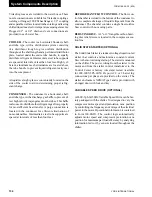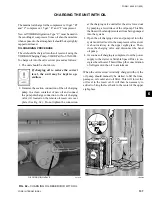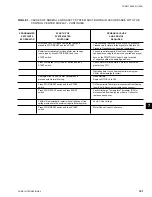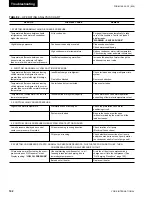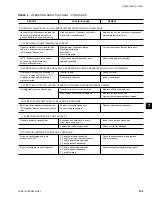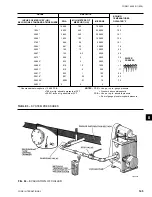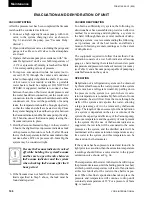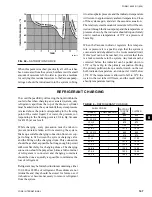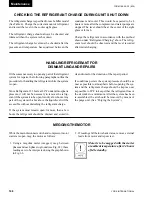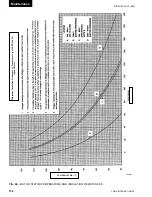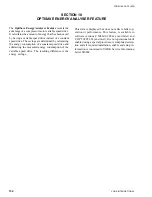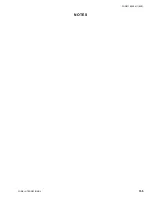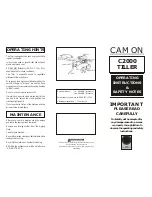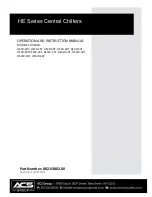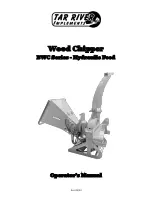
YORK INTERNATIONAL
148
FORM 160.55-O1 (920)
CHECKING THE REFRIGERANT CHARGE DURING UNIT SHUT DOWN
HANDLING REFRIGERANT FOR
DISMANTLING AND REPAIRS
The refrigerant charge is specified for each chiller model
(See Table 4). Charge the correct amount of refrigerant
and record the level in the cooler sight glass.
The refrigerant charge should always be checked and
trimmed when the system is shut down.
The refrigerant charge level must be checked after the
pressure and temperature has equalized between the
condenser and cooler. This would be expected to be 4
hours or more after the compressor and water pumps are
stopped. The level should be at the center of the sight
glass ±1/4 inch.
Charge the refrigerant in accordance with the method
shown under “Refrigerant Charging” above. The refrig-
erant level should be observed and the level recorded
after initial charging.
If it becomes necessary to open any part of the refrigerant
system for repairs, the following paragraphs outline the
procedure for handling the refrigerant while the system
is open.
Since Refrigerant-123 boils at 82°F under atmospheric
pressure, it will not be necessary to remove the refrig-
erant if the system it to be open for only a few hours. Any
part of the system which is above the liquid level will be
accessible without disturbing the refrigerant charge.
If the system must remain open for more than a few
hours the refrigerant should be drained and stored in
clean drums for the duration of the repair period.
If conditions permit, the system pressure should be as
near as possible to atmospheric before opening the sys-
tem and the refrigerant charge should be kept as near
as possible to 82°F to keep either the refrigerant loss or
the air intake to a minimum. After the system has been
re-assembled, the air should be removed by means of
the purge unit. (See “Purging the System”.)
MEGGING THE MOTOR
While the main disconnect switch and compressor motor
starter are open, meg the motor as follows:
1. Using a megohm meter (megger), meg between
phases and each phase to ground (see Fig. 65); these
readings are to be interpreted using the graph shown
in Fig. 66.
2. If readings fall below shaded area, remove external
leads from motor and repeat test.
Motor is to be megged with the starter
at ambient temperature after 24 hours
of idle standby.
Maintenance

